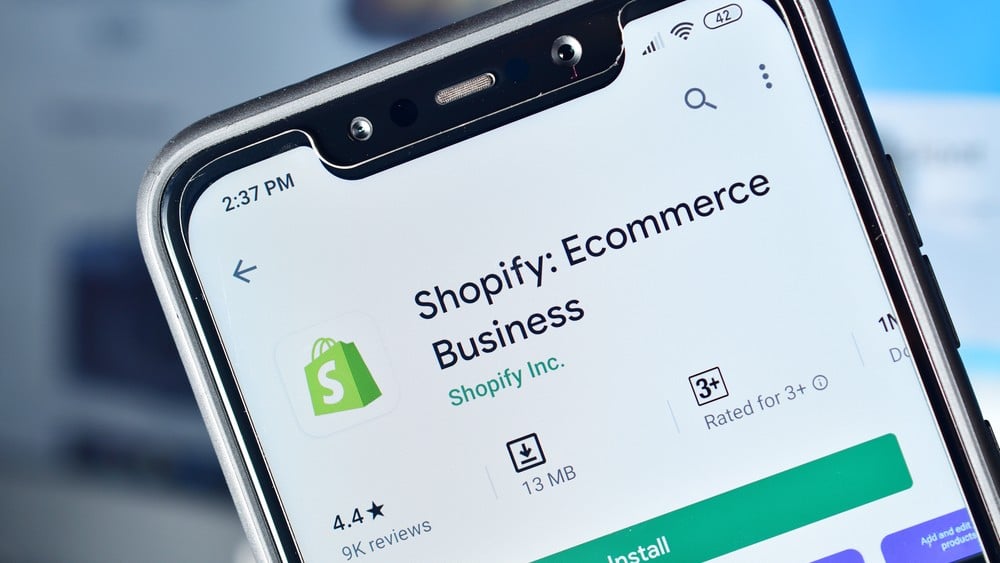Hello and welcome to an insightful article on Web Development Frameworks!
In this article, we will look at Web Development Frameworks and the benefits of using these frameworks.
Reading through this piece, you will understand how these web dev frameworks function, the top frameworks, and how to choose the best.
This article will discuss the following:
- Web Development Frameworks – Overview
- Types of Web Development Frameworks
- Benefits of Using Web Development Frameworks
- Top Front-End Web Development Frameworks
- Top Back-End Web Development Frameworks
So, if you are set, we will begin!
Web Development Frameworks – Overview

The process of developing a website can be made easier by using something called a web framework, which is a type of software framework.
It has become the standard method for developing and deploying web applications on the world wide web.
The primary objective of utilizing frameworks for Web Development is to automate the actions typically carried out throughout the development phase.
These frameworks come equipped with various features, including libraries for database access, session management, code reuse capabilities, and templating capabilities that make it possible to present information in a browser.

While designing your website, you can find yourself perplexed regarding which framework to utilize.
You are free to utilize whatever Web Development framework you like, each of which has specialized features that can even baffle seasoned engineers.
At the same time, you need to select the appropriate framework for your website to ensure its functionality and continued future success.
Types of Web Development Frameworks

The front-end of a web application, also known as the client-side part, and the back end, often known as the server-side part, are both essential components of every web application.
As a result, there are two distinct kinds of web frameworks Developers may use for Web Development.
Types of Web Development Frameworks
The “front-end” of a web application, often known as the “user interface,” can be designed with the help of these frameworks.
Most Front-End frameworks are written in computer languages like JavaScript, CSS, and HTML.
The Front-End framework is responsible for the development of the user experience, user interface design, and the management of other important facets of the application, including optimization for search engine results page (SEO), code snippets and templates, user interaction management, and more.
Back-End Web Development Framework
These frameworks are utilized throughout the design process of the Back-End, also known as the concealed portion of the application that is in charge of the operation of the web application.
Back-End frameworks are constructed using programming languages and others like them.
Some Back-End languages utilized are Microsoft .Net, Python, Java, Ruby, and PHP.
They accomplish this by addressing issues about the operation of the server and the database, routing protocols, solution logic and design, authorization options, data security, and other related topics.
Web Development Framework Architecture Classification

The architecture establishes the relationship between a framework’s many diverse components.
The functionality of an application is significantly impacted by the particular sort of framework architecture that is used.
The following are the categories into which framework architectures can be placed:
Model-View-Controller
The Model View Controller, more commonly abbreviated to MVC, is a common style of architecture utilized by various frameworks.
The MVC architecture separates the application into its three primary components
- Model
- View
- Controller
Each component is responsible for a certain set of functions.
It simplifies and streamlines the difficult processes that are involved in application development.
Model-View-ViewModel
The MVVM paradigm makes it possible to structure programs tidier and more structured following design principles.
In this instance, the logic for presenting data is kept distinct from the primary element of the business logic.
The MVVM architecture comprises
- Model
- View
- ViewModel
Push- and Pull-based
Pull-based design is focused on components, whereas push-based architecture prioritizes actions.
The action layer is where push-based models begin, and the data is pushed to the display layer.
On the other hand, pull-based architecture begins with the view layer rather than the presentation layer.
Three-Tier Architecture
The presentation or user interface (UI), application logic or functionality, and a database tier are the three codified layers that make up a three-tier, multilayer architecture.
Each layer can be deployed and controlled separately.
This architecture provides resilience and makes it possible for any service to scale while maintaining its optimal level of performance.
Benefits of Using Web Development Frameworks

In contrast to other design tools, frameworks provide a codebase and guidelines that have already been predefined, making building websites simpler.

As a consequence of this, the development process is sped up, which in turn minimizes the amount of time needed to bring the product to market.
The following is a list of the top five advantages of utilizing web frameworks:
Maintenance & Debugging
The majority of computer languages do not place a high priority on making their source code easily readable or maintaining it.
However, a large number of widely used frameworks for website development have already achieved this.
When developing a website from scratch, it is strongly advised that you utilize a framework, as these significantly impact how easy it is to troubleshoot and receive help.
Because each framework has its community of Developers, you can be confident that you will receive prompt replies to any problems you encounter.
Code Optimization
When using frameworks, there is no need to create numerous lines of code to add standard capabilities to a website; these lines of code are generated automatically.

Frameworks come equipped with code-generating capabilities that encourage simplicity and conciseness, minimizing the time and effort necessary for developers to complete their work.
Additionally, frameworks provide tools and functions that assist Developers in automating recurring processes such as authentication, caching, URL mapping, and other similar activities.
Improved Security
Frameworks come equipped with pre-installed security methods and features, which aid in the protection of websites against both existing dangers and those that may emerge in the future.
By using frameworks, Programmers can protect websites from various cyber assaults, such as data tampering, SQL injections, DDoS attacks, etc.
In addition, if you want to establish bespoke security criteria for websites, you can use open-source web frameworks.
Bootstrap Development
Frameworks provide Developers with a wide choice of tools and packages that aid in the first stages of the development process.
Using frameworks frees Programmers from the burden of writing every script from scratch.
Frameworks offer you more opportunities to investigate certain elements of a website, just like an expert Developer would, even if you have less experience in Web Development.
In addition, frameworks take care of most of the development procedures from the start and considerably cut down the time spent coding.
Code Reusability
Developers have access to a development environment that is quick, responsive, and effective, thanks to web frameworks.
In addition, frameworks come equipped with advanced capabilities such as live reload and hot reload, which lead to shortened iterations of the development cycle.
Also, Web Developers do not have to create complicated code or code consisting of several lines when they use web frameworks.
Instead, users can use the preset codebase to make modifications easily and execute easy bootstrapping by following the instructions.
Top Front-End Web Development Frameworks

One of the pioneering components of the process of designing and developing websites is the utilization of Front-End frameworks.
Your choice of frameworks determines your web application’s aesthetics, user experience, and visual attractiveness.
Angularjs
It is widely acknowledged that Angular is the only framework founded on Typescript.
It enables two-way data binding, which indicates that the view and the model are synced in real-time.
It ensures that any change to one component will immediately reflect the counterpart.
It has not been reported to have undergone any significant breaking changes in the past five years, making it an extremely stable phenomenon.
It is widely considered the client-side web framework with the highest level of security and provides extremely secure features such as DOM cleanliness.
Popular websites using Angular include Netflix, Upwork, and Paypal.
React
Besides being one of the most popular Java frameworks, it is also the Front-End website development framework utilized most.
The framework is improved with powerful capability thanks to React’s virtual Document Object Model (DOM), one of the library’s most notable features.
In addition, since the launch of the cross-platform mobile app development framework known as React Native, it has also seized a sizable portion of the mobile market.
Software Developers have utilized React to construct apps for a wide variety of user interfaces, which is evidence of the framework’s high degree of adaptability.
Vue.js
It is a straightforward framework for the creation of websites.
It is compact and provides data binding in both directions simultaneously.
In addition, the framework is component-based and has a visual DOM model; these features combine to make it a solution that is not just practical but also flexible.
Vue includes the capabilities of Angular for developing end-to-end applications and the View layer capabilities of React for managing the flow of data from the outside.
Vue.js
The fact that it is an open-source framework built with JS and offers comprehensive solutions for application flow and data management contributes to its popularity.
In addition to being a component-based framework, it provides data-binding in both directions.
It has a steep learning curve because of its rigid structure; nonetheless, it is a perfect and rapid development framework, and major firms like Apple use it for their product development.
The framework is pre-packaged with a selection of application programming interfaces (APIs), and it can perform multiple activities that are functionally equivalent.
Ember provides a whole Front-End stack, which includes a router, a pipeline for services, and a pipeline for assets.
Backbone.js
Backbone is a well-known and widely used lightweight web framework to construct rich single-page web applications.
The Model View Presenter architecture, on which it is based, makes it one of the quickest and easiest JavaScript frameworks.
This framework is an excellent option for developing dynamic applications due to its effectiveness in dynamically managing updates, maintaining clients, and synchronizing with servers.
As a result, this framework is a terrific choice.

It provides automatic updates to the HTML code and offers more than 100 different extensions.
RESTful APIs receive excellent assistance from the Back-End synchronization capability included in Backbone.
By adhering to the rules provided by Backbone, Developers can avoid engaging in laborious coding.
Svelte
It is one of the contemporary Web Development Frameworks that features better responsiveness, adaptability, and performance.
Svelte design philosophy is analogous to that of Python, and the programming language comes packaged with a high-quality instructional video that features a real-time interface.
It provides APIs that are not only powerful but also aesthetically pleasing, including features, syntax, installation size, and semantics.
During the compilation process, Svelte optimizes the code to propagate changes with a small increase in overhead.
Preact
This JS-based framework asserts to be a quicker alternative to React.
Because of its more compact size, you need not be concerned about its ability to deliver the same level of performance.
The community of JS Software Developers has shown a great amount of interest in Preact, which is built on the ES6 framework.
It is a variant of React that is noted for being lightweight and appropriate for developing dynamic web apps.
It receives changes in batches, comes equipped with a quicker virtual DOM library, and is optimized for the highest possible level of performance.
It is easy to carry anywhere and enjoyable to use.
The standard HTML characteristics are utilized by Preact, which enables Developers to begin being productive almost immediately.
LitElement
LitElement is a foundation class for developing web components that are both lightweight and rapid to load.
These components can be used on any web page.
When rendering into the Shadow DOM, it takes advantage of lit-HTML.
In addition, LitElement has the capability of adding an API for managing properties and attributes.
LitElement’s web components can be distributed around your organization and shared with others.
You may use these components in varying contexts, including your content management system, the primary document, or a framework like Vue or React.
Because it employs lit-HTML, only the dynamic components of your UI are rendered; hence, DOM updates are carried out promptly.
Alpine.js
Alpine is the ideal option to consider if you are working on a small project requiring only one or two components.
Because it is quite lightweight and leaves just a small imprint on the program, it is very popular among Developers.
Because Alpine is user-friendly for Developers, it enables you to concentrate more on development and less on configuration.
It allows you to use the declarative and reactive characteristics of the Angular or React frameworks at a lower cost.
JQuery
This framework is one of the earliest Front-End Development frameworks; despite its age, it is still widely used and popular, and it is undergoing ongoing improvement so that it can continue to be prominent among today’s technologies.
JQuery is straightforward, uncomplicated, and user-friendly, removing the necessity of writing lengthy javascript scripts.

Through various manipulations of the Document Object Model (DOM) and Cascading Style Sheets (CSS), the framework enhances the functionality of a website.
Popular web applications using JQuery include GitHub, Fiverr, Hulu, AirBnb, and many more.
Semantic UI
This particular one is one of the most recent contributions to the Front-End Web Development framework category.
Because the codes are easy to understand and are written in a common language, they do not require any explanation making them simple to employ, even for inexperienced users.

The framework provides enhanced responsiveness, receptiveness, and a wealth of user interface components.
Integration with several libraries provided by third parties offers a development environment that is both efficient and unified.
The framework is amazing in its capabilities and ease of use.
Foundation
It is a sophisticated Web Development framework that is put to use for the development of enterprise-level software.
It enables you to construct responsive, beautiful, and agile websites.
Though it may be tough to understand for beginners, it has some great capabilities, such as GPU acceleration for smooth animations and quick mobile rendering, making it a powerful framework among developers.
The framework allows personalizing the user experience across various platforms and devices.
It provides data exchange qualities, which implies it loads lightweight sections for mobiles but hefty sections for larger devices.
Unquestionably, it is among the very best mobile-friendly Front-End frameworks available on the market today.
Top Back-End Web Development Frameworks

Back-End frameworks have evolved to the point where they are now an essential component of modern Web Development.
Finding the appropriate framework is essential for Developers who want to ensure optimal performance and scalability of their work.
Express.js
Express is a web application framework written in Node.js that offers a wide range of functionality for constructing web and mobile applications.
Developers use it to construct web applications with a single page, many pages, or a hybrid layout.
It is a layer constructed on top of Node.js, and it assists in the management of servers.
Express is one of the greatest Back-End frameworks since it has capabilities like routing and debugging, and it also allows for quick server-side programming.
It is simple to understand, performs exceptionally well, and gives only the most essential of capabilities.
Next.js
The Next.js framework is a single-page application development environment that the React library powers.
Because it is a one-command toolkit that does not require configuration, it has a significant advantage over other options.
Using React, you can construct web applications that use server-side rendering and static content.
It is an excellent tool for constructing the website you intend to use next.
Because it possesses a plethora of fantastic features and benefits, Nextjs may be the best choice for you when it comes to developing your subsequent online application.
Django
Django is a high-level web framework written in Python that allows for quickly building websites that are both secure and easy to maintain.
Django, which seasoned Developers created, takes care of a significant portion of the pain associated with Web Development.
You can focus on developing your application rather than having to come up with solutions to problems that already exist.
In comparison to other popular frameworks, Django offers superior search engine optimization (SEO) capabilities.
It makes it possible for Developers to incorporate plugins developed by third parties quickly.
Ruby on Rails
It was a groundbreaking web framework that significantly impacted the development of many other frameworks.
It provides a Localization tool used to include a pre-designed code in a larger project.
It can perform its tests on the code you create, saving you time and effort throughout the quality assurance process.
In addition, it has many libraries that provide developers with all the tools necessary to create high-quality software.
Gatsby
Gatsby is a well-liked framework among Developers who work with React.
Producing a lightning-fast web experience that connects with your chosen services is recommended.
Gatsby is most commonly utilized in constructing e-commerce sites, landing pages, and blogs.
Because it is a static site generator, which does not link with the database or any sensitive information, you do not need to be concerned about the website’s security.
Gatsby is built according to a PRPL architectural pattern designed by Google; this helps to increase the performance of your website.
NuxtJs
Nuxt is a free and open-source framework to simplify and enhance the power of website building.
Built on top of Vue.js, it provides outstanding development capabilities such as automatically-generated routes, increased SEO, and enhanced control of meta tags.
It has a modular architecture, which allows developers to select from a variety of modules for a development process that is both quick and simple.
Spring
In addition to keeping Java viable in an era when cloud computing is becoming increasingly important, it is well-known for its ability to adapt to the shifting landscape of web development.
It is widely acknowledged that Spring is a safe, cost-effective, and adaptable framework.
Because Spring is so lightweight, it makes coding more efficient and reduces the effort spent developing applications overall.
Koa
It provides a foundation for web applications and APIs that is more compact, more expressive, and more resilient.
Koa allows you to do away with callbacks and substantially improve how you handle errors by utilizing asynchronous functions.
Nest.js
With the NestJS framework, Developers construct Node.js server-side applications that are scalable and efficient.
It is developed with TypeScript and provides complete support for it.
It utilizes very dependable HTTP Server frameworks like Fastify.
Nest offers a higher level of abstraction than the typical Node.js frameworks and makes the web APIs available to the Developer.
Phoenix
The Phoenix application uses the Model–View–Controller (MVC) paradigm on the server side.
Elixir is the programming language behind Phoenix.
The Plug library and the Cowboy Erlang framework are the foundations upon which it was built.
The platform was designed to assist in the process of fashioning applications that are both high-performing and scalable.
It is a dependable Back-End Developers’ framework that preserves productivity and fault tolerance in its design.
Productivity is increased, and it’s easier to maintain the code.
The framework adds several novel ideas that improve the functionality of the MVC design.
Monitoring connections is made simpler because real-time interaction between users and Developers may be readily carried out.
With features like a live dashboard and integrated instrumentation, Phoenix is a platform suited for production use.
CakePHP
CakePHP is a quick development framework for PHP that is open-source, free, and available.
It provides Programmers with a fundamental framework upon which they may build web applications.
It gives Programmers access to every tool they might require to begin writing code.
It is capable of handling every aspect, beginning with the initial request made by the user and continuing through the rendering of a web page.
Additionally, because it is based on MVC principles, the framework makes it simple for you to modify and extend the majority of the features of your application.
Your entire application will remain consistent and logical thanks to the framework’s provision of a fundamental organizational structure, which includes naming conventions for everything from files to database tables.
Flask
Flask is a web framework that is both space- and weight-efficient, and it was developed for the Python programming language.
It offers practical tools and features that simplify developing online applications using Python.
It provides Developers with flexibility and is an easier-to-use framework for new developers because you can quickly build a web application using only a single Python file, making it more accessible to Developers who are just starting.
How to Choose a Web Development Framework

When you use a framework, you are constantly reading and dealing with another person’s code.
Select a framework with a track record of high-quality documentation and training.
When selecting your favorite web development framework, you may want to consider the following aspects.
Documentation
When you return to a piece of code you wrote a while ago, it may not be easy to comprehend even if you wrote it.
On the other hand, when you use frameworks, you are working with the code written by someone else.
Consequently, it is essential to select a framework with high-quality documentation and training options to be utilized to its fullest potential.
Relevance
Instead of selecting a framework based on its level of popularity, you should go with the one that best meets your needs.
For instance, if you only need features related to routing, you do not want to use a full-stack framework.
First, you should grasp your requirements well and investigate the many possibilities.
Licensing
The fact that licenses can significantly influence your applications is the primary reason they are essential.
For instance, the GNU General Public License (GPL) will have to be adhered to by any application built on top of a framework licensed under the GPL.
On the other hand, this is not the case for a framework licensed under the MIT umbrella.
Stability
Even though coding standards and company regulations can’t be replaced by a framework, picking a strong one can help you maintain uniformity in your code, especially if your Developers are spread out across multiple locations.
Business Needs
When putting the finishing touches on a framework, keep your company’s demands in mind.
If, for example, you run a tiny firm interested in forming a partnership with a larger organization, you will likely go for the more substantial corporation’s structure.
Technical Support
Be sure that the framework you select has an active community for assistance if you want to use it.
When you first begin using a framework for your web application, it will become an indispensable component of that application.
If no assistance is available, your only options are to rebuild the code or perform the maintenance on your own.
Conclusion

By utilizing a Web Development Framework, you will have the peace of mind that comes along with knowing that the application you are developing is structured, that it is both manageable and upgradeable, and that it is in complete compliance with all of the business standards.
In addition, it enables Developers to conserve time by repeatedly reusing generic modules, which frees them up to work on other project development modules.
It is essential to select a framework that corresponds with the characteristics of the project you are working on.
For instance, you should emphasize server-side rendering, expedited development, and search engine optimization.
The Web Development Frameworks discussed in this article are the greatest Front-End and Back-End frameworks, and the advantages of each will assist you in selecting the most appropriate framework for your project.
FAQs

Is it difficult to learn ReactJs?
Any Web Development project must have both HTML and CSS.
Learning React should be a rather simple task if you already possess these abilities.
It is a fantastic tool if you want to begin or advance your profession as a web developer, even though it has its unique challenges.
Which JavaScript framework should I learn?
The fact that React is the most popular JavaScript Front-End framework shouldn’t come as a surprise to anyone.
It has a high utilization rate, many online learning sources, and many job openings; thus, it is an excellent option for novice developers who are just breaking into the industry.
Why are Web Development Frameworks useful?
The work of a Web Developer becomes easier with the use of powerful technologies known as frameworks.
They offer a standardized set of design and development conventions that may be implemented and customized for your website.
They are essential tools for developing websites to a high standard.
What is the fastest Front-End framework?
Svelte is known to be a lightweight, open-source, component-based, Front-End development option.
It enables Web Developers to complete their projects with significantly less coding than they would do using other frameworks.
Developed using Typescript, Svelte is among the quickest Front-End frameworks currently available.
Is Laravel a Web Development Framework?
Laravel is currently one of the most well-known open-source frameworks for constructing websites.
It is a potent instrument that satisfies particular requirements and contributes to the development of an outstanding CMS or web application.
It makes developing huge and complicated websites simple and free of charge.









